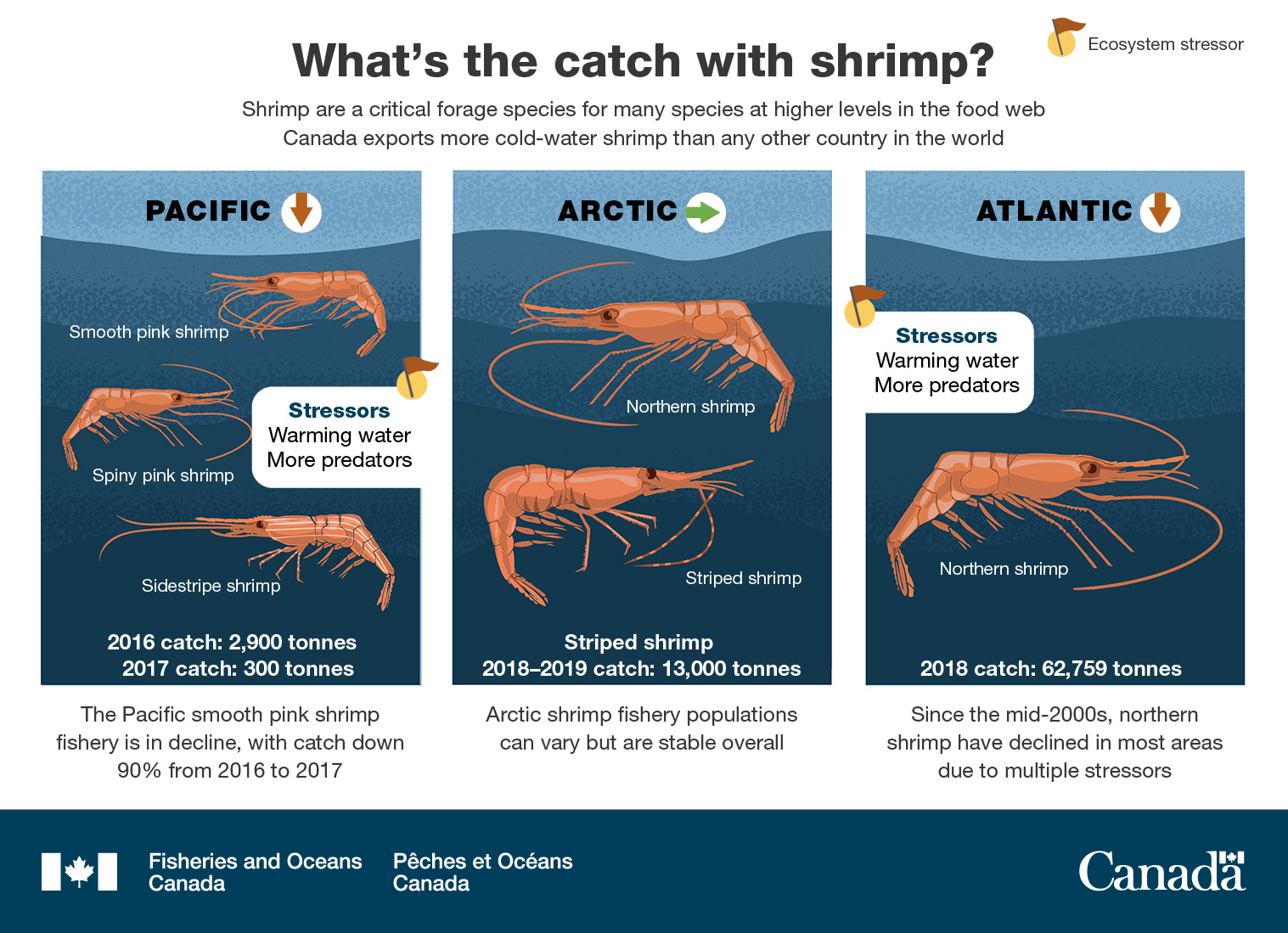Infographic: What's the catch with shrimp

Description: What's the catch with shrimp
A three-panel figure showing how different ecosystem stressors are impacting shrimp species in the Pacific, Artic and Atlantic oceans. For the Pacific, the overall trend for shrimp is downward. The three main species are Smooth pink, Spiny pink, and Sidestripe and they are impacted by warming water and more predators. In 2016, the catch of shrimp was 2,900 tonnes and in 2017 it was 300 tonnes. In the Arctic, there are two main species, Northern shrimp and Striped shrimp, and the overall trend for shrimp is stable. The catch for Striped shrimp in 2018-2019 was 13,000 tonnes. For the Atlantic, the main species is Northern shrimp which has been declining since the mid-2000s. The stressors for shrimp here are warming waters and more predators. In 2018, the catch for Northern shrimp was 62,759 tonnes.
Text
What’s the catch with shrimp
Shrimp are a critical forage species for many species at higher levels in the food web. Canada exports more cold-water shrimp than any other country in the world.
Pacific
The Pacific smooth pink shrimp fishery is in decline, with catch down 90% from 2016 to 2017.
- Smooth pink shrimp
- Spiny pink shrimp
- Sidestripe shrimp
2016: 2,900 tonnes
2017: 300 tonnes
Stressors – Warming water More predators
Arctic
Arctic shrimp fishery populations can vary but are stable overall
- Northern shrimp
- Striped shrimp
Striped shrimp 2018–2019 catch: 13,000 tonnes
Atlantic
Since the mid-2000s, northern shrimp have declined in most areas due to multiple stressors
- Northern Shrimp
2018 catch: 62,759 tonnes
Stressors – Warming water More predators
Related links
- Date modified: